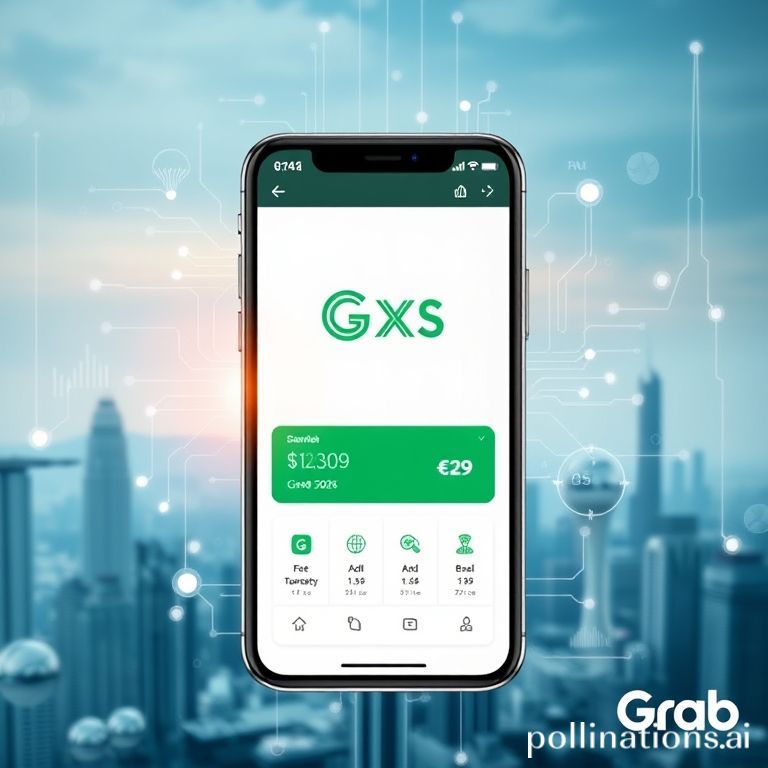GXS Bank Receives Fresh US$60 Million Boost from Grab

In a significant move reinforcing its commitment to the burgeoning digital banking sector, GXS Bank, a pioneering digital lender supported by the Southeast Asian technology giant Grab and telecommunications leader Singtel, has recently secured an additional US$60 million capital injection. This latest funding round underscores the strategic importance its key shareholders place on the bank’s growth and expansion within the competitive financial landscape.
Regulatory filings reveal that the capital infusion was meticulously channeled through A-5 DV Holdings Pte Ltd and SFG Digibank Investment Pte Ltd, both wholly-owned subsidiaries of Grab Holdings. These entities subscribed to new ordinary shares on September 15, marking a clear and direct investment from Grab. Specifically, A-5 DV Holdings acquired 46.35 million shares, while SFG Digibank Investment picked up an additional 30.9 million shares, as detailed in documents submitted to Singapore’s Accounting and Corporate Regulatory Authority (ACRA).
This latest investment is not an isolated event but rather the third substantial capital injection by Grab into GXS Bank within a remarkably short span of under two years. Prior to this, Grab had invested a significant US$142 million in mid-2024, followed by another US$109 million in January 2024. Cumulatively, Grab's total commitment to its digital banking arm has now reached approximately US$311 million since the beginning of the previous year. This consistent and substantial financial backing highlights Grab's unwavering belief in the long-term potential and strategic value of GXS Bank.
The Landscape of Digital Banking in Singapore
GXS Bank stands as one of only four entities to have been awarded a coveted digital bank license by the Monetary Authority of Singapore (MAS). This licensing framework is designed to foster innovation while maintaining financial stability. Under MAS regulations, fully digital banks commence operations in a restricted phase, necessitating a minimum paid-up capital of S$15 million (approximately US$11.7 million) and imposing initial deposit limits of S$75,000 per individual customer. This cautious approach allows new digital banks to gradually build their operational capabilities and risk management frameworks.
As these digital banks mature and demonstrate robust operational capabilities, MAS mandates a progressive increase in their capital base. Ultimately, they are required to grow their capital to at least S$1.5 billion. Upon reaching this critical threshold, the initial operating restrictions are lifted, enabling these digital institutions to compete directly and on an equal footing with established traditional retail lenders. This phased approach ensures a controlled evolution of the digital banking ecosystem, safeguarding consumers and the broader financial system while encouraging innovation.
Grab's Strategic Vision and Financial Performance
Grab's foray into financial services, particularly digital banking, is a cornerstone of its broader "super-app" strategy, aiming to provide a comprehensive suite of services to its vast user base across Southeast Asia. While the long-term vision is clear, the path to profitability in this segment presents its own set of challenges. Grab’s most recent second-quarter earnings report indicated that financial services remains the only segment yet to achieve positive EBITDA (Earnings Before Interest, Taxes, Depreciation, and Amortization).
The adjusted EBITDA losses for the financial services division witnessed a slight widening to US$26 million in the quarter, compared to US$24 million reported a year earlier. This contrasts with the strong performance of Grab's other core segments: its mobility arm posted a positive adjusted EBITDA of US$164 million in Q2, an 8.7% increase from US$129 million last year, while the deliveries segment delivered US$63 million, up from US$42 million in Q2 2024. These figures illustrate the significant investment and incubation period required for new ventures like digital banking to mature and become profitable.
Future Outlook and Growth Trajectory
Despite the current losses in its financial services division, Grab remains optimistic about its future trajectory. During Grab’s first-half 2025 briefing, President and COO Alex Hungate provided encouraging insights into the progress of its digital banking operations. He highlighted "strong loan disbursal growth" across both GXS Bank in Singapore and GX Bank in Malaysia, noting the group’s successful scaling of new product launches. A key indicator of this growth was the more than doubling of retail loan customer drawdowns between March and June 2025, demonstrating increasing consumer adoption and trust.
Looking ahead, Hungate articulated ambitious targets for Grab’s financial services business. The company expects to exit 2025 with a robust loan book exceeding US$1 billion, encompassing the operations of GXS Bank and its other financial services offerings. Furthermore, Grab is "on track to achieve adjusted EBITDA breakeven in the second half of next year" for the entire financial services division. This outlook reflects a strategic pivot towards achieving financial sustainability within this crucial segment, positioning GXS Bank as a pivotal component of Grab's future profitability and market leadership in digital financial services.
